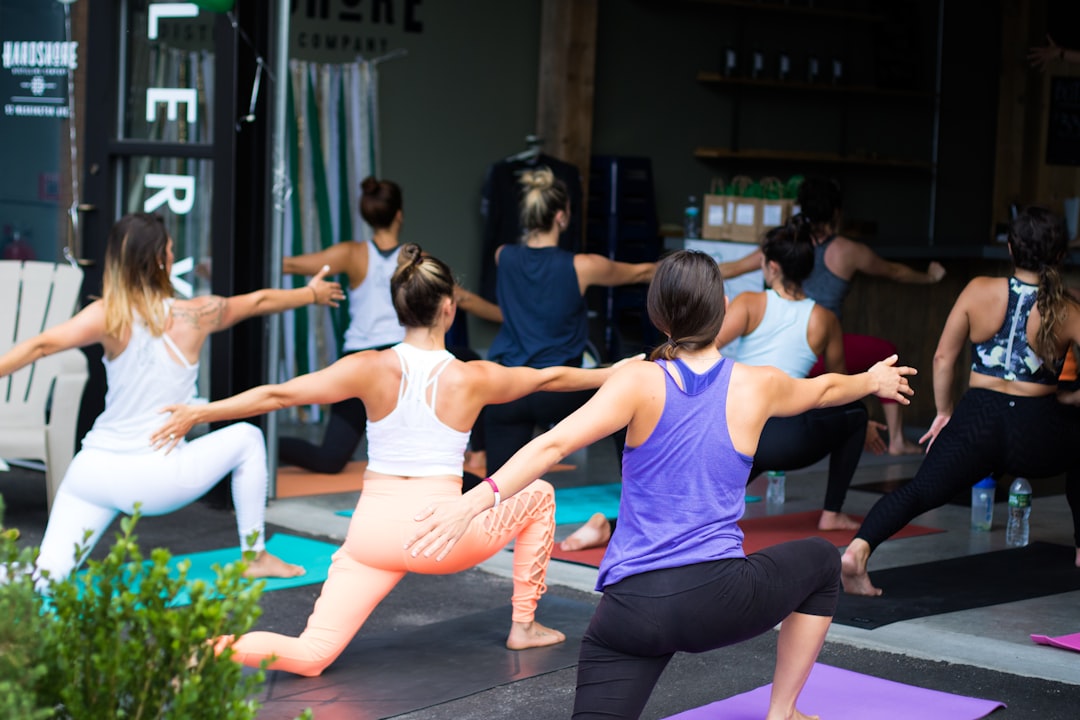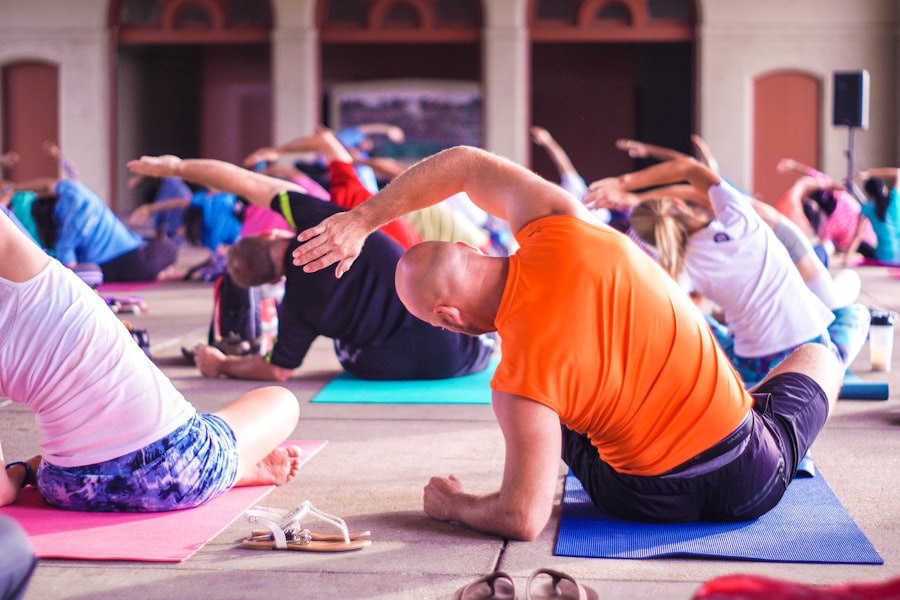
Keeping Hip Health in High School
The adolescent years are a critical period for physical development, and hip health plays a pivotal role in this process. High school students are often engaged in various physical activities, from sports to daily routines, which can place significant stress on their hip joints. Maintaining optimal hip health is essential not only for athletic performance but also for overall mobility and quality of life.
Healthy hips contribute to proper alignment and function of the lower body, which is crucial for activities such as running, jumping, and even walking. As students transition into adulthood, the habits they develop during these formative years can have lasting effects on their musculoskeletal health. Moreover, hip health is intricately linked to other aspects of physical well-being.
For instance, strong and flexible hips can enhance core stability, which is vital for balance and coordination. This is particularly important for high school athletes who rely on these attributes to excel in their respective sports. Additionally, good hip health can prevent injuries that may arise from overuse or improper biomechanics.
By prioritizing hip health during high school, students can set a foundation for a more active and injury-free lifestyle as they grow older.
Key Takeaways
- Hip health is crucial for high school students as it affects their overall mobility and physical activity levels.
- Common hip issues in high school students include hip impingement, muscle strains, and overuse injuries.
- Tips for maintaining hip health include maintaining a healthy weight, avoiding prolonged sitting, and using proper form during physical activities.
- Hip-strengthening exercises for high school students can include squats, lunges, and hip bridges to improve stability and prevent injuries.
- Nutrition plays a key role in hip health, with a focus on consuming a balanced diet rich in calcium, vitamin D, and anti-inflammatory foods.
Common Hip Issues in High School Students
Hip Flexor Strain: A Common Issue
One common problem is hip flexor strain, which can occur due to repetitive activities such as running or kicking. The hip flexors are a group of muscles that allow for the lifting of the knee and bending at the waist. Overuse or sudden increases in activity can lead to inflammation and pain in this area, making it difficult for students to participate in sports or even perform daily tasks.
Hip Impingement: A Prevalent Condition
Another prevalent issue is hip impingement, also known as femoroacetabular impingement (FAI).
Symptoms often include pain in the groin or outer hip, stiffness, and a decreased range of motion.
Early Intervention is Key
High school athletes involved in sports that require deep squatting or twisting motions, such as soccer or basketball, are particularly at risk for developing hip impingement. Recognizing these common hip issues is crucial for students and coaches alike, as early intervention can prevent more serious complications down the line.
Tips for Maintaining Hip Health

Maintaining hip health requires a multifaceted approach that encompasses proper warm-up routines, stretching, and strength training. One effective strategy is to incorporate dynamic stretching before engaging in physical activities. Dynamic stretches, such as leg swings and walking lunges, help increase blood flow to the muscles and prepare the joints for movement.
This proactive approach can significantly reduce the risk of strains and sprains during sports or exercise. In addition to warm-ups, students should prioritize regular strength training focused on the muscles surrounding the hips. Exercises that target the glutes, quadriceps, and hamstrings can enhance stability and support the hip joint during physical activities.
Incorporating resistance bands or bodyweight exercises like squats and lunges into a fitness routine can be particularly beneficial. Furthermore, students should pay attention to their body mechanics during activities; maintaining proper form while running or lifting can help prevent undue stress on the hips.
Hip-Strengthening Exercises for High School Students
| Exercise | Repetitions | Sets | Frequency |
|---|---|---|---|
| Clamshells | 15-20 | 3 | 3 times a week |
| Side Leg Raises | 12-15 | 3 | 3 times a week |
| Bridges | 10-12 | 3 | 3 times a week |
To promote hip health, high school students can engage in a variety of targeted exercises designed to strengthen the muscles around the hip joint. One effective exercise is the glute bridge, which not only strengthens the glutes but also engages the core and lower back muscles. To perform this exercise, students lie on their backs with their knees bent and feet flat on the ground.
By lifting their hips towards the ceiling while squeezing their glutes, they can effectively activate key muscle groups that support hip stability. Another beneficial exercise is the side-lying leg lift.
Students lie on their sides with their legs stacked and lift the top leg towards the ceiling while keeping it straight. This exercise can be made more challenging by adding ankle weights or resistance bands. Incorporating these exercises into a regular fitness routine can help high school students build strength in their hips, ultimately reducing the risk of injury and enhancing athletic performance.
The Role of Nutrition in Hip Health
Nutrition plays a crucial role in maintaining overall joint health, including that of the hips. A well-balanced diet rich in essential nutrients can support bone density and muscle function, both of which are vital for healthy hips. Calcium and vitamin D are particularly important for bone health; calcium helps build and maintain strong bones while vitamin D aids in calcium absorption.
High school students should aim to include dairy products, leafy greens, and fortified foods in their diets to ensure they are meeting their calcium needs. In addition to calcium and vitamin D, anti-inflammatory foods can also contribute to hip health by reducing inflammation around the joints. Foods rich in omega-3 fatty acids, such as salmon, walnuts, and flaxseeds, have been shown to have anti-inflammatory properties.
Incorporating a variety of fruits and vegetables into daily meals provides antioxidants that combat oxidative stress and support overall joint function. By focusing on a nutrient-dense diet, high school students can promote optimal hip health and enhance their physical performance.
Understanding the Impact of Posture on Hip Health

The Consequences of Sedentary Behavior
This sedentary behavior often results in a forward-leaning posture that places additional strain on the hips and lower back. If left unchecked, this can lead to long-term hip health issues.
Promoting Better Posture
Educating students about proper posture—both while sitting and standing—can help mitigate these issues. To promote better posture, students should be encouraged to take regular breaks from sitting and engage in activities that promote mobility. Simple practices such as standing up to stretch or walk around every hour can help alleviate tension in the hips and improve overall alignment.
Strengthening Core Muscles for Better Posture
Additionally, incorporating exercises that strengthen the core muscles can enhance postural stability and support proper alignment of the pelvis and spine. By fostering an awareness of posture among high school students, educators and coaches can play a vital role in promoting long-term hip health.
Seeking Professional Help for Hip Pain
When high school students experience persistent hip pain or discomfort, it is essential to seek professional help promptly. Ignoring symptoms or attempting to self-diagnose can lead to further complications or chronic issues down the line. Healthcare professionals such as physical therapists or sports medicine specialists can provide valuable insights into the underlying causes of hip pain and recommend appropriate treatment options.
A thorough evaluation by a healthcare provider may include physical assessments, imaging studies like X-rays or MRIs, and functional movement screenings. Based on these assessments, professionals can develop tailored rehabilitation programs that address specific weaknesses or imbalances contributing to hip pain. Early intervention is key; addressing issues promptly not only alleviates pain but also helps prevent future injuries that could hinder athletic performance or daily activities.
Creating a Hip-Healthy Environment in High School
Creating a supportive environment for hip health within high schools involves fostering awareness among students, coaches, and staff about the importance of maintaining healthy hips. Schools can implement educational programs that focus on injury prevention strategies, proper warm-up techniques, and the significance of nutrition for joint health. Workshops led by healthcare professionals can provide valuable information on recognizing early signs of hip issues and understanding when to seek help.
Additionally, schools should encourage physical activity beyond traditional sports programs by offering diverse options such as yoga or dance classes that promote flexibility and strength in the hips. Providing access to resources like fitness equipment or safe spaces for exercise can further motivate students to prioritize their physical well-being. By cultivating an environment that emphasizes hip health education and encourages active lifestyles, high schools can play a crucial role in supporting students’ long-term musculoskeletal health.
FAQs
What is hip health?
Hip health refers to the overall well-being and functionality of the hip joint, including the surrounding muscles, tendons, and ligaments. It is important for maintaining mobility, stability, and overall quality of life.
Why is hip health important for high school students?
Hip health is important for high school students as it directly impacts their ability to participate in physical activities, sports, and overall daily functioning. Maintaining good hip health can prevent injuries and promote an active lifestyle.
What are some common issues that can affect hip health in high school students?
Common issues that can affect hip health in high school students include overuse injuries, muscle imbalances, poor posture, and sports-related injuries such as hip impingement or labral tears.
How can high school students maintain good hip health?
High school students can maintain good hip health by incorporating regular stretching and strengthening exercises, maintaining proper posture, avoiding overtraining, and seeking proper medical attention for any hip-related pain or discomfort.
What are some exercises that can help improve hip health in high school students?
Exercises such as hip flexor stretches, hip abductor and adductor strengthening exercises, and core stability exercises can help improve hip health in high school students. It is important to consult with a fitness professional or physical therapist for personalized exercise recommendations.



